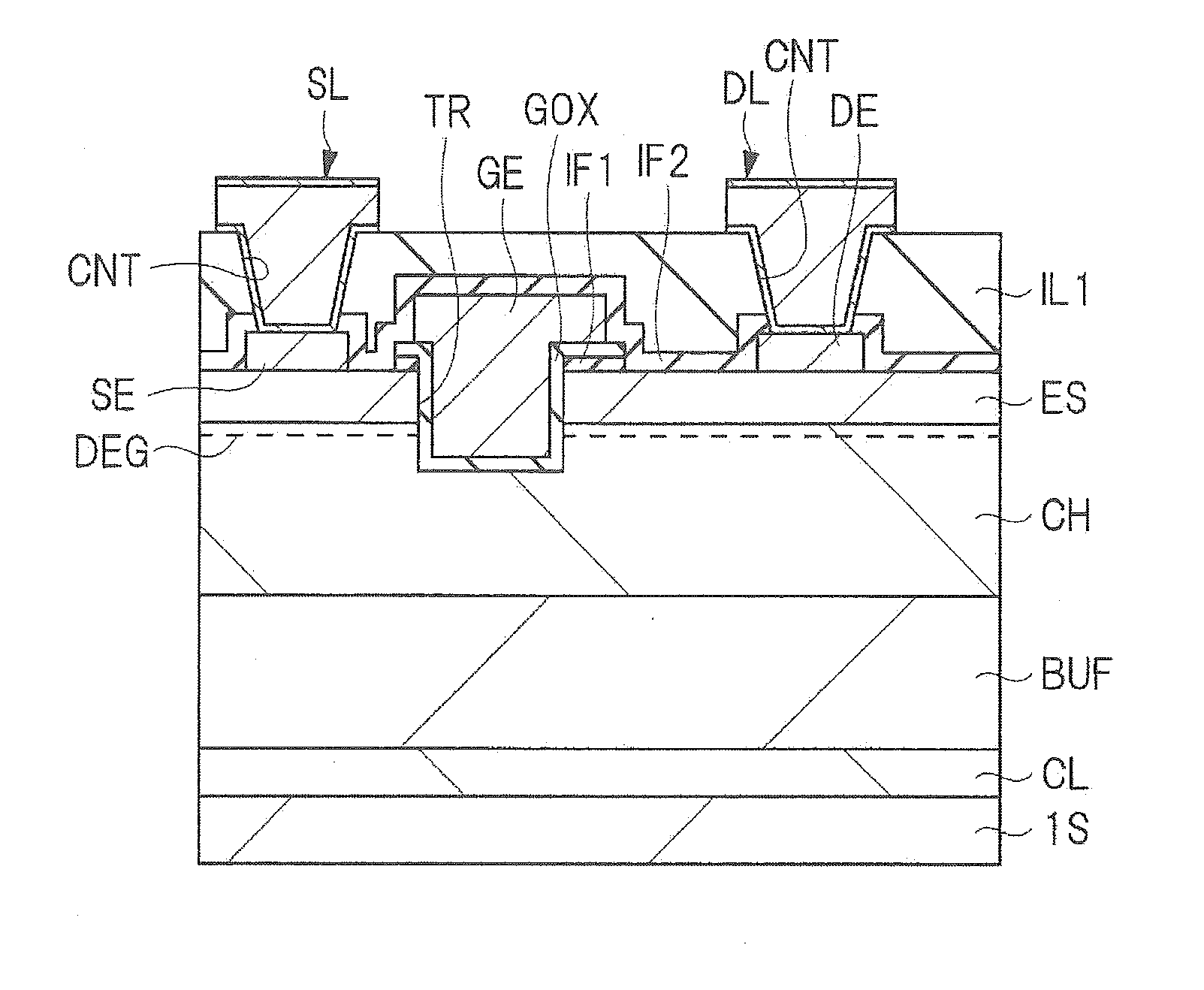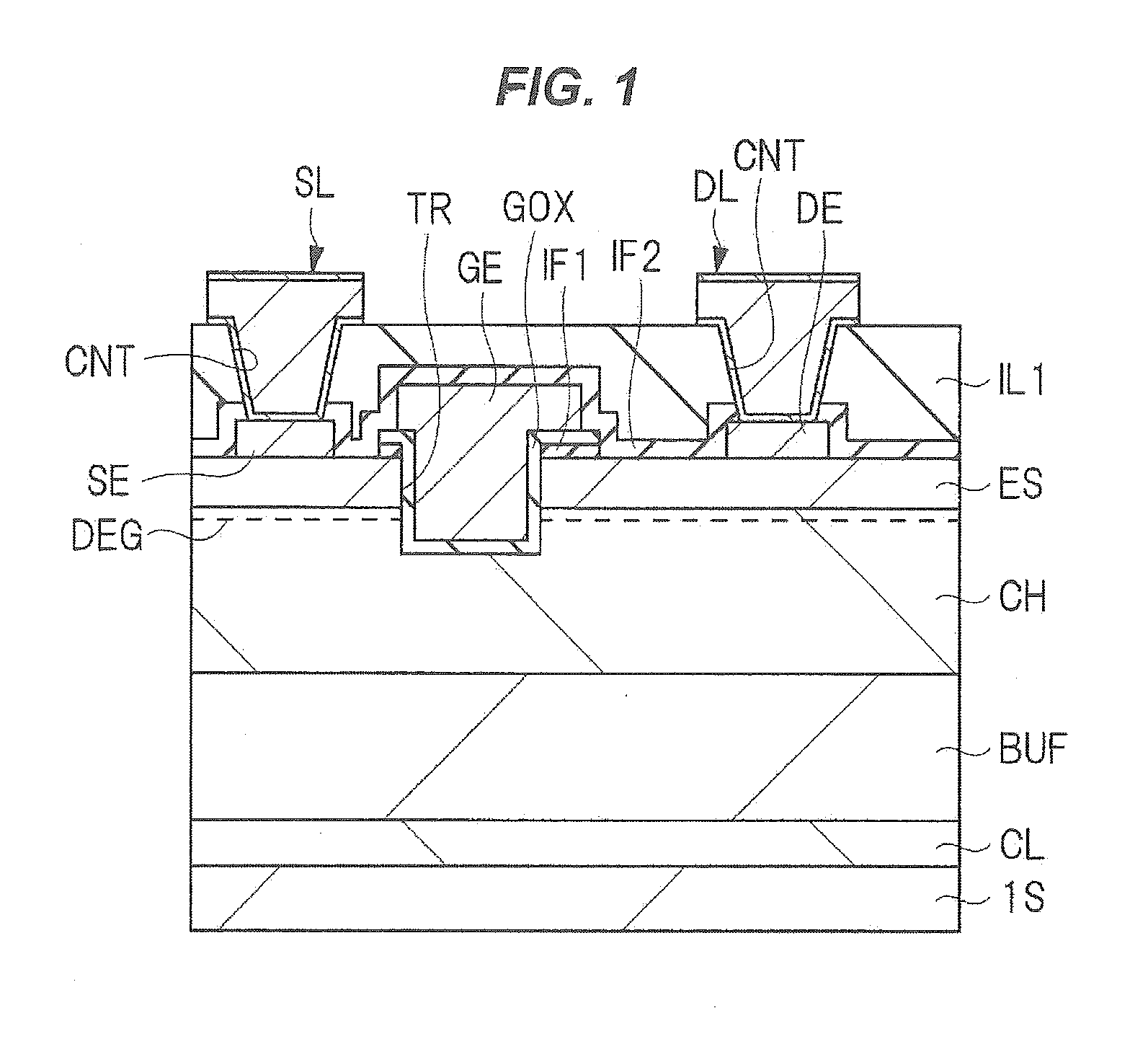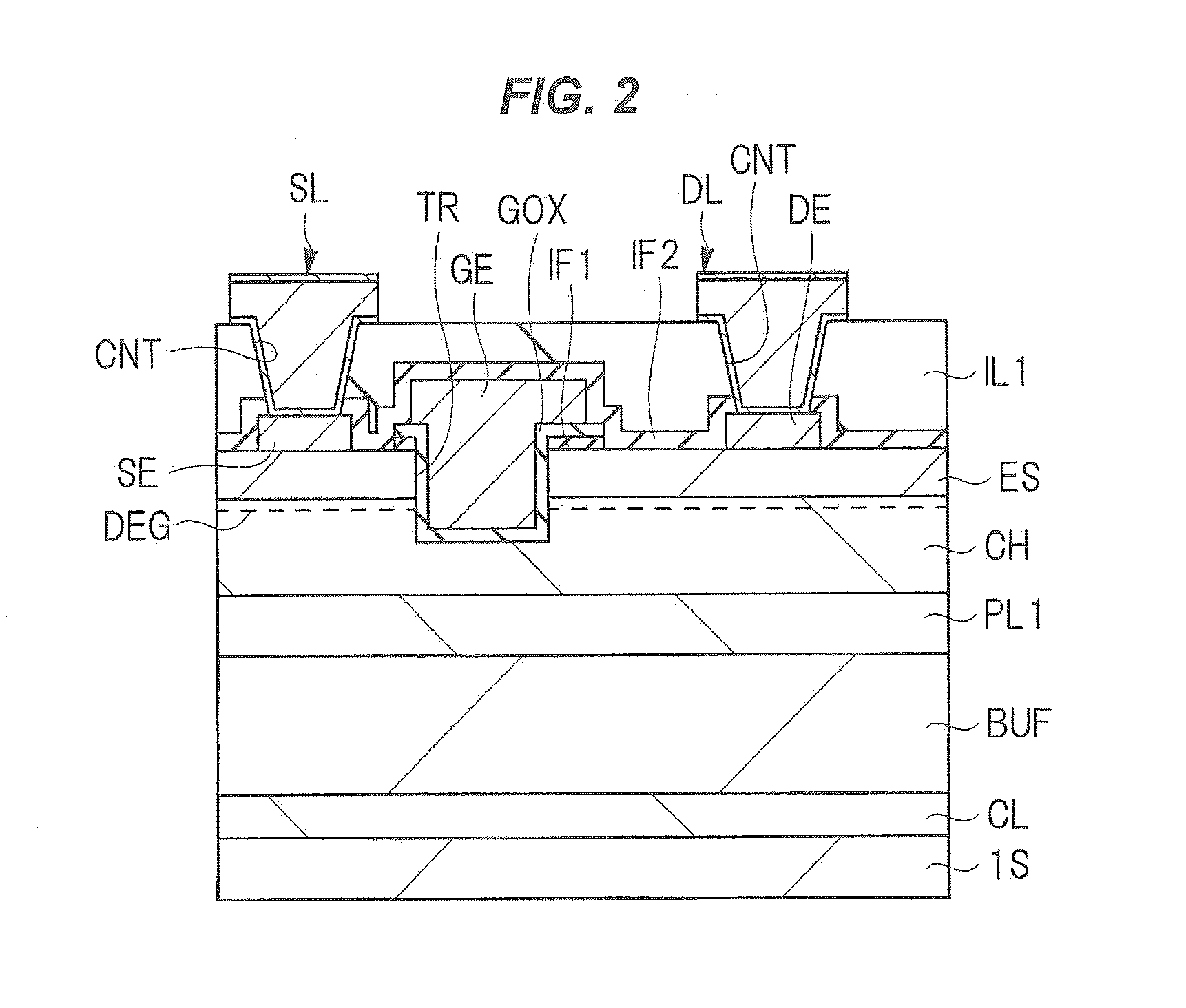Semiconductor device
a technology of semiconductor devices and semiconductors, applied in the direction of semiconductor devices, basic electric elements, electrical appliances, etc., can solve the problems of reducing the withstand voltage between the source electrode se and the drain electrode de with the increase of leakage current, affecting the performance of the power fet, so as to improve the performance of the semiconductor device
- Summary
- Abstract
- Description
- Claims
- Application Information
AI Technical Summary
Benefits of technology
Problems solved by technology
Method used
Image
Examples
first embodiment
Description of Related Art
[0034]FIG. 1 is a cross-sectional view showing a configuration example of a semiconductor device according to a related art 1. In the related art 1, a power FET (Field Effect Transistor) including a high electron mobility transistor will be described as an example of the semiconductor device.
[0035]As shown in FIG. 1, in the power FET of the related art 1, a buffer layer BUF including, for example, an Al0.07Ga0.93N layer is formed over a semiconductor substrate 1S including, for example, silicon, via a nucleation layer CL including, for example, an AlN layer (nitride aluminum layer). In addition, a high-electron-mobility layer (channel layer) CH including, for example, a GaN layer is formed over the buffer layer BUF and an electron supply layer ES including, for example, an AlGaN layer (Al0.22Ga0.78N) is formed over the channel layer CH.
[0036]Next, as shown in FIG. 1, in the power FET of the related art 1, there is formed an insulating film IF1 including, fo...
second embodiment
[0130]In a power FET including a high electron mobility transistor according to the present second embodiment, only the structure of the gate electrode is different from that of the power FET according to the first embodiment. In FIG. 3 showing the power FET according to the first embodiment, the trench TR is formed, and the gate insulating film GOX covering the inner wall of the trench TR and the gate electrode GE in contact with the gate insulating film GOX are formed.
[0131]On the other hand, FIG. 15 is a cross-sectional view showing a configuration of the power FET according to the Present second embodiment. In the present second embodiment, as shown in FIG. 15, a p-type cap layer PCP is formed in contact with the electron supply layer ES and the gate electrode GE is formed over the p-type cap layer PCP. At this time, it is desirable that the p-type cap layer PCP and the gate electrode GE are schottky-coupled to electrons. In addition, a gate insulating film (not shown in the dra...
third embodiment
[0139]In the first embodiment and the second embodiment, a power FET including a high electron mobility transistor has been described as an application example of the technical idea, and in the present third embodiment, a semiconductor laser will be described as an application example of the technical idea.
[0140]
For example, a semiconductor laser is used for recording and reproduction of an optical disk. In recent years, a short wavelength semiconductor laser has been often used for recording and reproduction of an optical disk as capacities and densities of optical disks increase. That is, as semiconductor lasers used for recording of an optical disk, the demand for blue-violet semiconductor lasers whose wavelength is shorter than that of red semiconductor lasers is increasing.
[0141]A semiconductor laser emits light corresponding to the magnitude of the band gap of the semiconductor material, and thus it is necessary to use a semiconductor material having a large band gap in order ...
PUM
| Property | Measurement | Unit |
|---|---|---|
| threshold voltage | aaaaa | aaaaa |
| threshold voltage | aaaaa | aaaaa |
| thickness | aaaaa | aaaaa |
Abstract
Description
Claims
Application Information
 Login to View More
Login to View More - R&D
- Intellectual Property
- Life Sciences
- Materials
- Tech Scout
- Unparalleled Data Quality
- Higher Quality Content
- 60% Fewer Hallucinations
Browse by: Latest US Patents, China's latest patents, Technical Efficacy Thesaurus, Application Domain, Technology Topic, Popular Technical Reports.
© 2025 PatSnap. All rights reserved.Legal|Privacy policy|Modern Slavery Act Transparency Statement|Sitemap|About US| Contact US: help@patsnap.com



